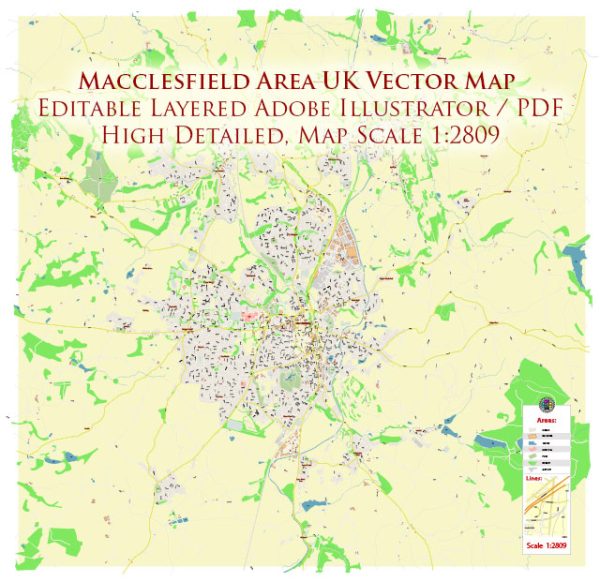Macclesfield, located in Cheshire, England, has a rich history of urban development that spans centuries. The town’s development is closely tied to its geographical location, economic activities, and societal changes. Here is a brief overview of the history of urban development in Macclesfield:
- Medieval Period (12th-15th centuries):
- Macclesfield’s origins can be traced back to the medieval period when it was a market town and a center for the production of textiles, especially silk. The town’s growth was influenced by the presence of a market, which attracted traders and settlers.
- Tudor and Stuart Eras (16th-17th centuries):
- During the Tudor and Stuart periods, Macclesfield continued to thrive as a market town. The silk industry became increasingly important, and the town gained a reputation for producing high-quality silk products. The growth of industry led to the establishment of workshops and mills along the River Bollin, contributing to the town’s economic development.
- 18th Century:
- The 18th century marked a significant period of expansion for Macclesfield. The Industrial Revolution had a profound impact on the town, with the silk industry becoming more mechanized. The construction of mills and factories changed the town’s landscape, and the population increased as people moved to Macclesfield in search of work.
- 19th Century:
- The Victorian era saw further industrialization and urbanization in Macclesfield. The arrival of the railway in the mid-19th century improved transportation links, facilitating the movement of goods and people. The textile industry continued to play a crucial role, and the town’s architecture reflected the prosperity of the time with the construction of grand buildings and residences.
- 20th Century:
- Macclesfield faced challenges in the early 20th century as the demand for silk declined. However, the town diversified its economic activities, and industries such as pharmaceuticals and engineering became important. Urban development continued, and the town adapted to changing economic trends.
- Contemporary Period:
- In recent decades, Macclesfield has undergone further changes in response to economic shifts and societal changes. The town has seen both preservation efforts to protect its historical architecture and modern developments to meet the needs of a growing population.
- Cultural and Recreational Spaces:
- Macclesfield boasts several parks, including South Park and West Park, providing green spaces for the community. The town has also preserved historical landmarks such as St. Michael’s Church and the Heritage Centre, contributing to its cultural identity.
Macclesfield’s history of urban development reflects the broader patterns of industrialization, economic shifts, and societal changes experienced by many towns in the United Kingdom. Today, it stands as a blend of historical charm and modern amenities.


 Author: Kirill Shrayber, Ph.D.
Author: Kirill Shrayber, Ph.D.